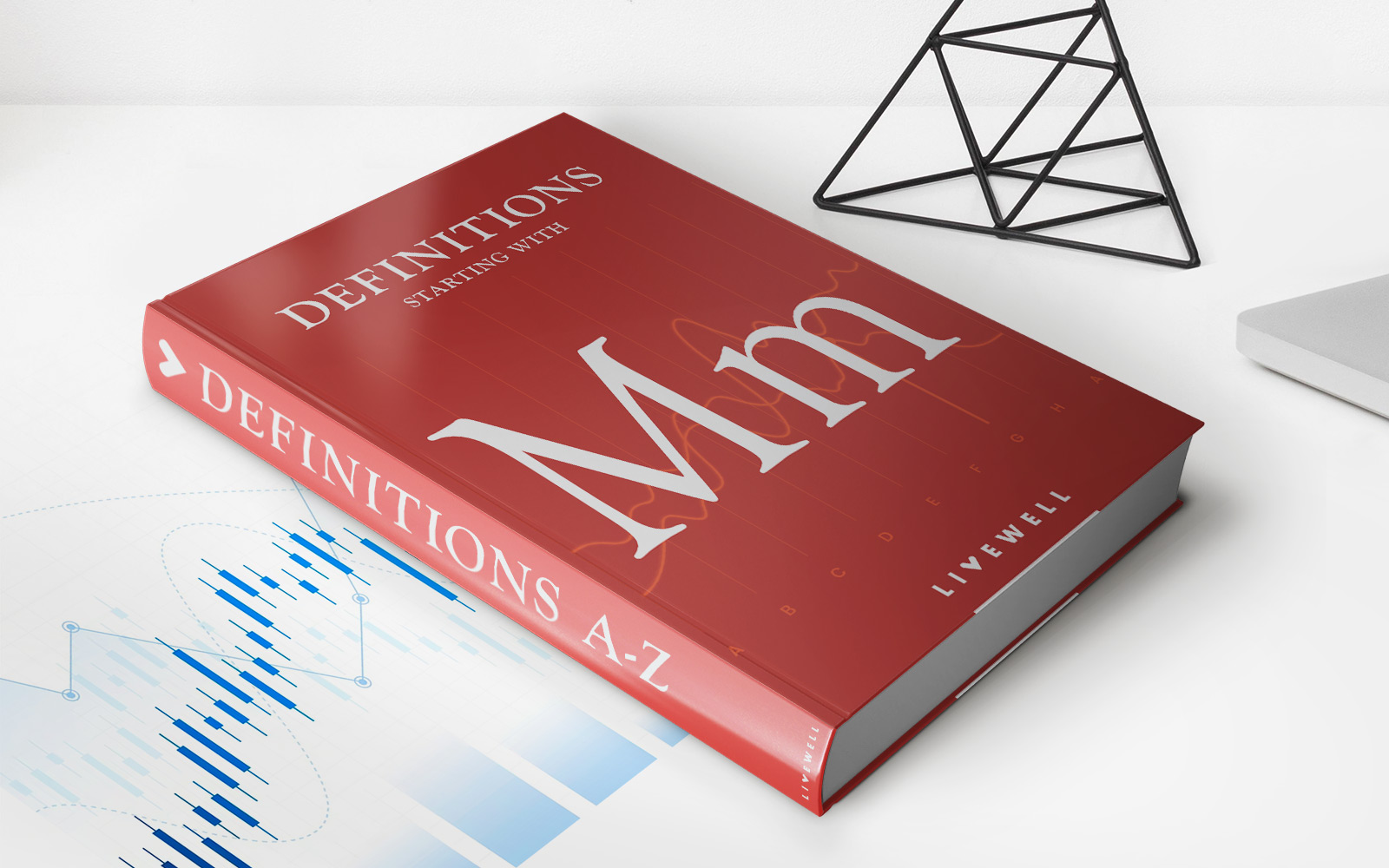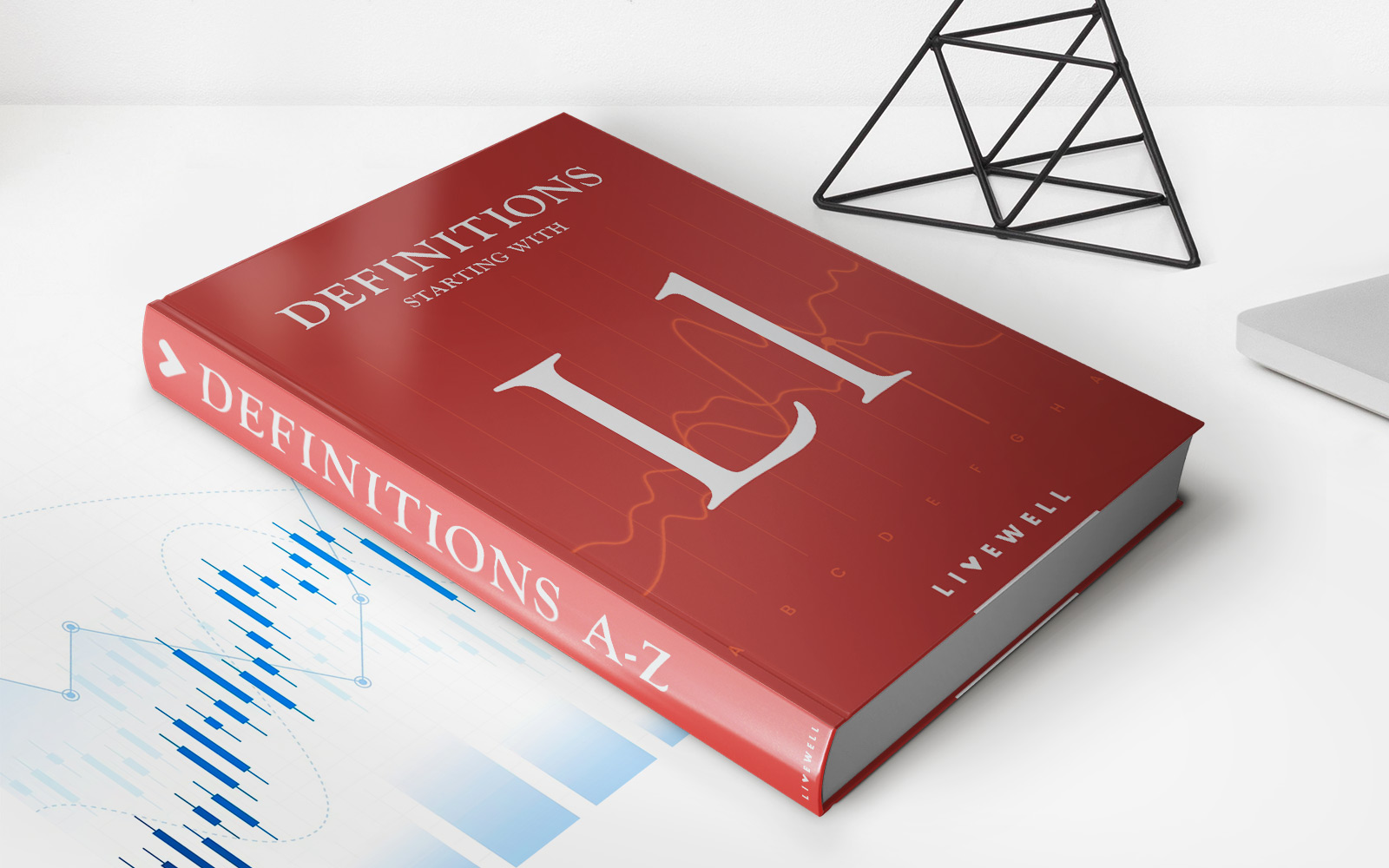Home>Finance>How Do You Compute The Capital Structure Weights Required For The WACC?


Finance
How Do You Compute The Capital Structure Weights Required For The WACC?
Modified: December 30, 2023
Learn how to calculate the capital structure weights needed to determine the weighted average cost of capital (WACC) in finance.
(Many of the links in this article redirect to a specific reviewed product. Your purchase of these products through affiliate links helps to generate commission for LiveWell, at no extra cost. Learn more)
Table of Contents
- Introduction
- Definition of WACC
- Importance of Computing Capital Structure Weights for WACC
- Factors to Consider when Computing Capital Structure Weights
- Methods for Computing Capital Structure Weights for WACC
- Market Value of Debt and Equity Method
- Book Value of Debt and Equity Method
- Target Capital Structure Method
- Weighted Average Method
- Conclusion
Introduction
Welcome to the world of finance, where understanding the capital structure of a company is crucial for making informed decisions. The capital structure represents the mix of debt and equity that a company utilizes to finance its operations. The Weighted Average Cost of Capital (WACC) is a financial metric that helps companies determine their cost of capital and make effective investment decisions.
WACC takes into account both the cost of debt and the cost of equity and calculates the average cost based on the proportion of each source of finance. But how do you compute the capital structure weights required for the WACC? This question is essential, as accurate capital structure weights are vital for the accurate calculation of WACC.
In this article, we will delve into the intricacies of computing capital structure weights. We will explore different methods and factors that must be considered to arrive at the most accurate weightings for the calculation of WACC. So, whether you are a financial analyst, an investor, or simply someone interested in understanding the inner workings of finance, this article aims to provide you with the knowledge you need.
So, let’s dive in and explore the world of capital structure weights and their significance for calculating WACC. Understanding this concept will give you a solid foundation for making well-informed financial decisions and evaluating investment opportunities.
Definition of WACC
Before we delve into the computation of capital structure weights, let’s begin by understanding what WACC actually is. The Weighted Average Cost of Capital (WACC) is a financial metric that calculates the average cost of financing a company’s operations. It takes into account both the cost of debt and the cost of equity and provides a single rate that represents the overall cost of capital.
WACC is a crucial tool for companies as it helps them evaluate investment opportunities and determine whether a project or acquisition will generate returns that exceed the cost of capital. It is also used to determine the minimum return required on new investment projects.
The formula for calculating the WACC is as follows:
WACC = (E/V) * Ke + (D/V) * Kd * (1 – Tax Rate)
Where:
- E: The market value of equity
- V: The total market value of equity and debt
- Ke: The cost of equity
- D: The market value of debt
- Kd: The cost of debt
- Tax Rate: The corporate tax rate
By using this formula, companies can determine their weighted average cost of capital, which represents the average return they must generate on their investments to meet the expectations of equity investors and debt holders.
Now that we have a clear understanding of what WACC is, let’s explore the importance of computing capital structure weights for WACC calculation.
Importance of Computing Capital Structure Weights for WACC
Computing accurate capital structure weights is vital for the calculation of the Weighted Average Cost of Capital (WACC). The capital structure weights represent the proportion of debt and equity financing in a company’s overall capital structure. These weights are used to determine the relative importance of each source of funds when calculating WACC.
Here are a few reasons why computing capital structure weights accurately is crucial:
- Effective decision-making: Companies use WACC as a standard benchmark to evaluate investment opportunities. Accurate capital structure weights ensure that the WACC reflects the true cost of capital and provides a reliable basis for decision-making. Incorrect or outdated weights can lead to erroneous calculations and wrong investment decisions.
- Cost of capital estimation: By calculating the WACC with the correct capital structure weights, companies can estimate the cost of capital required for different projects. This estimation is essential for determining the minimum return needed to cover the cost of capital and generate value for shareholders. Accurate weights ensure that the estimated cost of capital aligns with the actual financing mix of the company, leading to realistic project evaluations.
- Comparison with hurdle rate: The WACC serves as a hurdle rate or minimum acceptable rate of return for investment projects. Computing capital structure weights correctly ensures that the WACC accurately represents the company’s financing structure. This allows for meaningful comparisons between the hurdle rate and the projected returns of potential investments, aiding in the identification of lucrative opportunities.
- Investor and stakeholder communication: Accurate capital structure weights are essential in communicating with investors and stakeholders. The WACC reflects the cost of capital from the perspective of both equity holders and debt holders. Communicating the WACC with precise weights helps investors understand the company’s capital structure, risk profile, and expectations for returns. It also provides debt holders with insight into the company’s ability to meet debt obligations.
- Optimal financing decisions: Understanding the weightings between debt and equity allows companies to make informed financing decisions. By accurately computing capital structure weights, companies can determine the optimal mix of debt and equity that minimizes the overall cost of capital. This can help maximize shareholder value and improve the financial health of the company.
In summary, computing capital structure weights accurately is crucial for calculating the WACC, which is essential for effective decision-making, cost of capital estimation, comparison with hurdle rates, investor communication, and optimal financing decisions. Now that we understand the importance of accurate capital structure weights, let’s explore the factors to consider when computing these weights.
Factors to Consider when Computing Capital Structure Weights
When computing capital structure weights for the Weighted Average Cost of Capital (WACC), it is important to consider several factors. These factors help ensure that the weights accurately represent the proportion of debt and equity financing in a company’s capital structure. Here are some key factors to consider:
- Market value of debt and equity: The market value of debt and equity is a crucial factor in determining the capital structure weights. The market value represents the current market price of the securities issued by the company. Using market values instead of book values provides a more accurate reflection of the company’s current financing structure.
- Seniority of debt: Different types of debt may have different levels of seniority. Secured debt, which is backed by collateral, typically has a higher priority of repayment compared to unsecured debt. When computing capital structure weights, it is important to consider any variations in seniority and assign appropriate weightings to each type of debt.
- Convertible securities and options: Convertible securities, such as convertible bonds or preferred stock, and stock options can impact the capital structure weights. These securities have the potential to convert into equity, and their inclusion requires careful consideration when computing weights. The potential dilution effect must be factored in to ensure accurate representation of the capital structure.
- Tax shield: The tax shield represents the tax benefits that arise from the deductibility of interest expense. Debt financing provides interest expense deductions that can reduce the overall tax burden of a company. When computing capital structure weights, it is important to consider the tax shield effect and adjust the weights accordingly.
- Industry and market dynamics: The capital structure of a company can be influenced by industry and market dynamics. Different industries and market conditions may have varying levels of leverage or equity financing. It is important to consider these factors when computing capital structure weights to ensure they are in line with industry norms and market trends.
By taking these factors into account, companies can compute capital structure weights that accurately reflect their financing mix. This ensures that the Weighted Average Cost of Capital (WACC) calculation is based on realistic weightings and provides a reliable measure of the overall cost of capital.
Now that we have explored the factors to consider when computing capital structure weights, let’s move on to the different methods used for this computation.
Methods for Computing Capital Structure Weights for WACC
There are several methods available to compute capital structure weights for the Weighted Average Cost of Capital (WACC). Each method takes into account different factors and provides a different perspective on the company’s financing mix. The choice of method depends on the availability of data and the specific requirements of the analysis. Here are four commonly used methods:
1. Market Value of Debt and Equity Method:
This method assigns weights based on the market value of debt and equity. The market value represents the current market price of the securities issued by the company. The weight of each component is calculated by dividing its market value by the total market value of the company’s debt and equity. This method provides a real-time reflection of the capital structure and is commonly used in WACC calculations.
2. Book Value of Debt and Equity Method:
Unlike the previous method, this approach assigns weights based on the book value of debt and equity. The book value represents the value of the assets and liabilities recorded in the company’s financial statements. The weight of each component is calculated by dividing its book value by the total book value of the company’s debt and equity. While this method may not reflect the market value of the securities, it can still provide useful insights, especially when market values are not readily available.
3. Target Capital Structure Method:
This method assigns weights based on the company’s target capital structure. The target capital structure represents the ideal proportion of debt and equity financing that a company aims to achieve. The weight of each component is determined by the company’s stated target percentages. This method is useful when a company has defined and publicly communicated its desired capital structure.
4. Weighted Average Method:
This method is a combination of the previous three methods. It assigns weights based on a weighted average of the market value, book value, and target capital structure methods. The weight assigned to each method is determined based on the company’s specific circumstances and the availability of data. This method provides a balanced approach that takes into account different factors and can provide a more robust estimation of capital structure weights.
It is important to note that the choice of method depends on the specific context and objectives of the analysis. Companies should carefully consider the availability and reliability of data, as well as the relevance of each method to their specific situation. The key is to use a method that best represents the true capital structure of the company and provides accurate weights for the WACC calculation.
Now that we have explored the different methods for computing capital structure weights, let’s conclude our discussion on the significance of these weights for the calculation of WACC.
Market Value of Debt and Equity Method
The Market Value of Debt and Equity Method is a commonly used approach to compute capital structure weights for the Weighted Average Cost of Capital (WACC). This method assigns weights based on the market value of a company’s debt and equity securities. The market value represents the current market price of these securities and reflects the valuation of the company by investors.
To calculate the weight of each component, the market value of debt and equity is divided by the total market value of the company. The resulting ratios represent the proportion of each source of financing in the overall capital structure. These weights are then used in the WACC calculation to determine the cost of debt and equity.
The Market Value of Debt and Equity Method is favored because it provides a real-time snapshot of a company’s financing mix. By using market values, fluctuations in stock prices and market conditions are reflected accurately, allowing for more precise calculations of the WACC. This method is especially useful for companies with publicly traded securities as the market values are readily available.
However, it is important to note that the Market Value of Debt and Equity Method may not give a complete picture of the capital structure for companies with privately held securities or those experiencing significant market price volatility. In such cases, other methods such as the Book Value of Debt and Equity Method or the Target Capital Structure Method may provide more appropriate weightings.
Despite its limitations, the Market Value of Debt and Equity Method is widely used because it provides a realistic representation of the current market valuation of a company’s financial structure. This, in turn, contributes to more accurate calculations of the WACC, which is vital for evaluating investment opportunities, making financing decisions, and determining overall business viability.
Now that we have explored the Market Value of Debt and Equity Method, let’s move on to the next method: the Book Value of Debt and Equity Method.
Book Value of Debt and Equity Method
The Book Value of Debt and Equity Method is an approach to compute capital structure weights for the Weighted Average Cost of Capital (WACC) based on the book value of a company’s debt and equity. The book value represents the value of assets and liabilities recorded in the company’s financial statements.
To calculate the weight of each component, the book value of debt and equity is divided by the total book value of the company. The resulting ratios indicate the proportion of each source of financing in the overall capital structure. These weights are then utilized in the WACC calculation to determine the cost of debt and equity.
The Book Value of Debt and Equity Method is useful when market values are not readily available or when there is a preference to use book values as a reflection of the company’s financial structure. While market values may fluctuate due to market conditions and investor sentiment, book values provide a more stable and historical perspective of a company’s financing mix.
It is important to note that the Book Value of Debt and Equity Method may have some limitations. For example, book values may not accurately reflect the current market valuation of a company’s financial structure, especially during periods of market volatility or when there are significant differences between the book value and market value of securities.
Despite these limitations, the Book Value of Debt and Equity Method can still provide valuable insights into a company’s capital structure. It is particularly useful for companies with privately held securities or those looking for a more conservative representation of their financial position.
When using the Book Value of Debt and Equity Method, it is crucial to ensure that the book values are up to date and reflect the true financial position of the company. Regularly updating and reconciling the book values with market values can help mitigate any inaccuracies that may arise from using book values alone.
Now that we have explored the Book Value of Debt and Equity Method, let’s move on to the next method: the Target Capital Structure Method.
Target Capital Structure Method
The Target Capital Structure Method is an approach used to compute capital structure weights for the Weighted Average Cost of Capital (WACC) based on a company’s desired or target capital structure. The target capital structure represents the ideal proportion of debt and equity financing that a company aims to achieve.
In this method, the weights of debt and equity are determined based on the company’s stated target percentages. These percentages are typically defined in terms of the long-term goals, risk tolerance, and financial strategies of the company. The weight of each component is calculated by dividing the target value by the sum of the target values for both debt and equity.
The Target Capital Structure Method is useful when a company has clearly defined and publicly communicated its desired capital structure. It allows for a more intentional approach to capital structure determination and aligns the WACC calculation with the company’s strategic objectives.
It is important to mention that the target capital structure may not always be achieved in practice due to various factors such as market conditions, borrowing constraints, investor preferences, or regulatory requirements. Therefore, it is important to regularly reassess and adjust the target capital structure to reflect the evolving needs and circumstances of the company.
While the Target Capital Structure Method provides a clear guideline for capital structure weights, it may not consider the market valuation or book values of the securities. Therefore, it should be used in conjunction with other methods to ensure a comprehensive and accurate representation of the company’s financial structure.
By employing the Target Capital Structure Method, companies can align their WACC calculation with their long-term financial strategy, which can facilitate decision-making, project evaluation, and capital allocation. It allows for a proactive approach to managing the capital structure, taking into account the company’s specific goals and risk preferences.
Now that we have explored the Target Capital Structure Method, let’s move on to the final method: the Weighted Average Method.
Weighted Average Method
The Weighted Average Method is an approach used to compute capital structure weights for the Weighted Average Cost of Capital (WACC) by taking into account multiple factors and combining different methods. This method aims to provide a balanced representation of a company’s capital structure.
In the Weighted Average Method, weights are determined based on a weighted average of various factors such as the market value of debt, market value of equity, book value of debt, book value of equity, and target capital structure. These weights are calculated by assigning a weight to each factor based on the company’s specific circumstances and data availability.
The Weighted Average Method allows for flexibility in incorporating multiple sources of information into the capital structure weighting process. It takes into account various factors that are relevant to the company’s financial structure, ensuring a more accurate representation of the proportions of debt and equity financing.
This method is particularly useful when there are discrepancies or limitations in using a single method alone. By considering multiple factors, the Weighted Average Method helps mitigate any potential biases or inaccuracies that may arise from relying solely on one method.
It is important to note that the Weighted Average Method requires careful consideration and judgment in assigning appropriate weights to each factor. The choice of weights should be based on factors such as the availability and reliability of data, relevance to the company’s financial structure, and specific objectives of the analysis.
By using the Weighted Average Method, companies can incorporate different perspectives and data sources to develop a more robust representation of their capital structure. This can lead to improved accuracy in the WACC calculation, enabling better decision-making regarding investment opportunities, financing decisions, and overall financial strategy.
Now that we have explored the Weighted Average Method, let’s conclude our discussion on the methods used to compute capital structure weights for WACC.
Conclusion
Computing accurate capital structure weights is essential for the calculation of the Weighted Average Cost of Capital (WACC), a critical financial metric in evaluating investment opportunities, making financing decisions, and determining the overall cost of capital for a company.
Throughout this article, we have discussed various methods for computing capital structure weights, including the Market Value of Debt and Equity Method, the Book Value of Debt and Equity Method, the Target Capital Structure Method, and the Weighted Average Method.
The choice of method depends on factors such as the availability and reliability of data, the specific circumstances of the company, and the objectives of the analysis. Each method has its own strengths and limitations, and a comprehensive understanding of the company’s financial structure is crucial in selecting the most appropriate approach.
Accurate capital structure weights are essential for effective decision-making, cost of capital estimation, comparison with hurdle rates, investor communication, and optimal financing decisions. By considering factors such as the market value of debt and equity, seniority of debt, convertible securities, tax shield, and industry dynamics, companies can arrive at more realistic and meaningful capital structure weightings.
It is important to regularly reassess and update the capital structure weights to reflect changes in market conditions, business strategies, and financial goals. This ensures that the WACC calculation remains relevant and provides a reliable measure of the company’s cost of capital.
In conclusion, computing capital structure weights accurately is paramount for the precise determination of the Weighted Average Cost of Capital (WACC). It empowers companies to make informed financial decisions, evaluate investment opportunities, and effectively allocate resources. By understanding the significance of capital structure weights and employing the appropriate methods, companies can strengthen their financial positions and drive long-term success.














